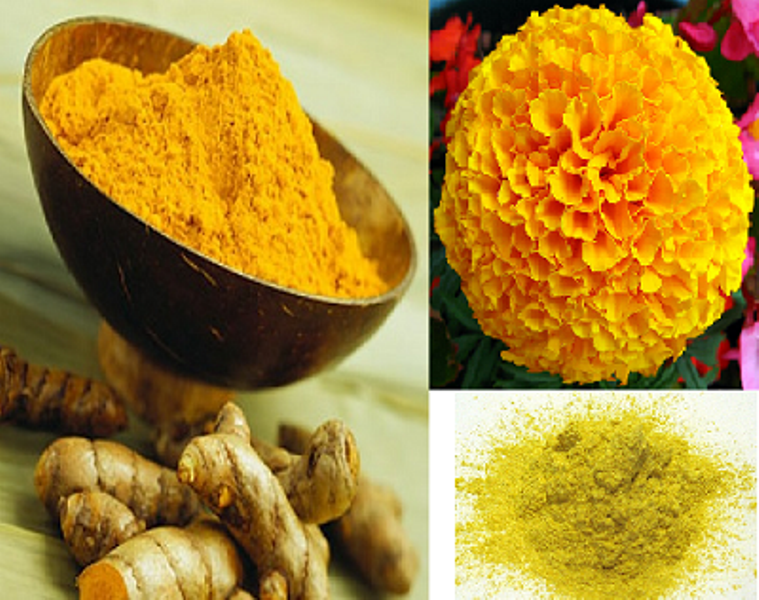Holi, the festival of Colours is celebrated in different corners of India with pomp and gaiety on full moon day in the month of Phalgun which is the month of March as per the Gregorian calendar. We all are also aware of the Legend of demon King Hiranyakashyap and his son Prahlad and sister Holika. I don’t want to repeat that story. Have you ever thought that there could be any scientific reason behind the festivals we celebrate? Here, I intend to trace the science behind the festival of Holi. Let’s explore-
Holi is played in the Spring Season which is a period between end of winter and advent of summer. We normally go through the transition phase of winter and summer. The period induces the growth of bacteria in the atmosphere as well as in the body. When Holika is burnt, temperature of the nearby area raises around 50-60 degree Celsius. Following the tradition when people perform Parikrama (go around the bonfire/pyre), the heat coming from the bonfire kills the bacteria in the body and cleanses it.
In some parts of the country, after Holika Dahan (burning of Holika) people put ash on their forehead and also mix Chandan (paste of sandal wood) with the young leaves and flowers of the Mango tree and consume. It is believed to promote good health.
This is the time, when people get the feeling of tardiness. This is quite natural for the body to experiences some tardiness because of change in weather from cold to the hot in the atmosphere. To counter this laziness, people sing Songs (Phag, Jogira etc.) with Dhol, Manjira and other traditional instruments. This helps in rejuvenating the human body. Their physical movement while playing with colours also helps in the process.
Colours play vital role in fitness of human body. Deficiency of a particular colour could cause an ailment and can be cured when that colour element is supplemented either through diet or medicine. In ancient times, when people started playing Holi, the colours used by them were made from natural sources like turmeric, Neem, Palash (Tesu) etc. The playful pouring and throwing of colour powders made from these natural sources has a healing effect on the human body. It has the effect of strengthening the ions in the body and adds health and beauty to it.
Plant based sources of colours:
| Colour | Sources |
| Green | Mehendi and dried leaves of Gulmohur tree, leaves of spring crops and herbs, Spinach leaves, rhododendron leaves and pine needles |
| Yellow | Turmeric (Haldi) powder, Bael fruit, amaltas, species of chrysanthemums, and species of marigold, dandelions, sunflowers, marigolds, daffodils and dahlias, gram flour |
| Red | Rose or the bark of crab apple trees, Red Sandal wood Powder, feels of Red Pomegranate, flowers of Tesu tree (Palash), fragrant red sandal wood, dried hibiscus flowers, madder tree, radish and pomegranate |
| Saffron | flowers of Tesu tree (Palash), Mixing lime with turmeric powder creates an alternate source of orange powder, barberry |
| Blue | Indigo, Indian berries, species of grapes, blue hibiscus and jacaranda flowers |
| Purple | Beetroot |
| Brown | Dried Tea leaves, red maple trees, Katha |
| Black | Some species of grapes, fruit of Gooseberry (Amla) |
Now a day, market is mostly flooded with synthetic colours and herbal colours are not available in adequate quantity. Synthetic Colours are also cheap and people feel we have to pour this on others and not on ourselves, hence they opt for it. But they forget one thing that everybody thinks in the same way and others also pour you with same synthetic colours. The synthetic colours available in the market comprises of toxic components such as lead oxide, diesel, chromium iodine and copper sulphate which lead to rashes on the skin, allergies, pigmentation, frizzy hair and eye irritation. In extreme cases, it can cause serious skin diseases and clogging of hair cuticles resulting in severe hair damage. So we should deliberately opt for herbal colours even if it is costly. If demand increases, the cost would naturally come down.
Problems caused by some common Synthetic colours:
Green – It might contain copper sulphate and can cause problems like eye allergy and temporary blindness.
Red – It might contain mercury sulphide, which can lead to skin cancer, mental retardation, paralysis and impaired vision.
Purple – It might contain chromium iodide leading to health problems like bronchial asthma and allergies.
Silver – It might contain aluminum bromide, which is carcinogenic.
Blue – It might contain Prussian blue, which can cause contract dermatitis.
Black – It might contain lead oxide leading to health problems like renal failure and learning disability.
So try to play holi with natural colours. I know it is practically not possible all of a sudden. In the meantime, you can minimize the side effects of synthetic colours by following some simple steps. Here are they-
Tips: Before playing Holi
- Body: It’s also a good idea to apply a thick layer of moisturizer, petroleum jelly or coconut oil on your face and other exposed parts of the body to prevent colours from coming into direct contact with your skin.
- Hair: Oil your hair and scalp with olive, coconut or castor oil. Add a few drops of lemon juice to prevent dandruff and infection triggered by the chemical colours.
- Clothing: What you choose to wear should cover maximum parts of your body. Wear dark colour-full sleeves cotton clothes. Synthetic cloth would be sticky and denims would be heavy once you have a bucket full of colours/water splashed on you.
- Lips and Eyes: Don’t wear lenses. Mostly people are interested in applying surprise colours on your face and you may get your eyes hurt by the lenses. Use a sun glass to protect your eyes from a misfire of colour filled darts or water jets. Apply a lip balm for your lips.
- Water: Drink plenty of water before you start playing Holi. This will keep your skin hydrated. Also keep sipping water carefully while playing Holi.
- Bhang/Alcohol: Don’t consume bhang if you are a heart patient, excessive intake may lead to heart attack/failure.
Tips: After playing Holi
- Do not scrub the colour off with soap. Soaps contain esters that erode the skin layers and often cause rashes. Use a cream-based cleanser or you can even use oil for removing the colours, and then go for a bath. Apply a lot of moisturising cream to keep the skin hydrated.
- If the colours are still left on your skin you can apply besan with milk/milk cream on your body for removing colours.
- Don’t use kerosene, spirit or petrol to clean your face. Try a cream-based cleanser or baby oil.
- Don’t use hot water, it will stick the colour on your body. Use normal water.
- Stay away from sunlight till colour is removed.
- Itching in eye or redness may be normal but if it continues for more than few hours immediately contact with a doctor.
Courtesy: Bodhivriksha








